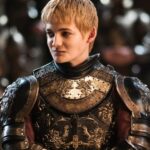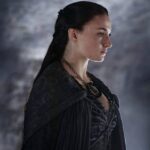The following contains spoilers for Game of Thrones and the A Song of Ice and Fire book series.
“Always the artists,” King-Beyond-the-Wall Mance Rayder says of the White Walkers back in Game of Thrones Season 3 Episode 3, “Walk of Punishment.”
The Night King and the White Walkers have shown a proclivity for a certain swirly symbol dating back to the moment in season 3 where Mance, Jon, and the Free Folk come across a swirling pattern of horse heads on the Fist of the First Men.
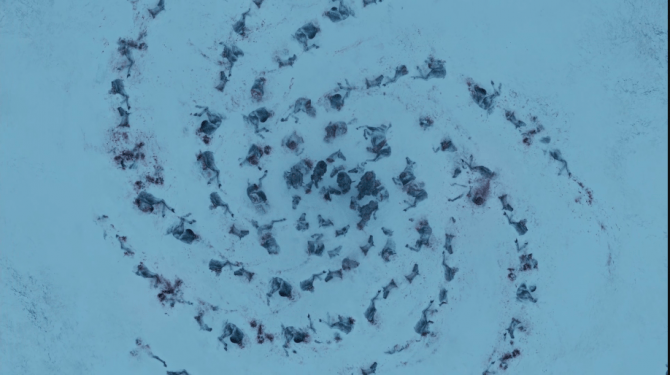
That swirly symbol has popped up again and again in Game of Thrones, most recently in the Season 8 premiere, “Winterfell.”
further reading: Game of Thrones: How Daenerys Targaryen Could Become Her Father
In “Winterfell,” The Night King impales the poor little lord of House Umber of Last Hearth, Ned, onto a wall surrounded by limbs forming the familiar swirling pattern. When little Ned reanimates and frightens Tormund (and me) Tormund kills the wight with his flaming sword. It’s at that moment, perhaps because it’s the first time we’ve seen the pattern ablaze, that some onlookers online realized that The Night King’s symbol bears some resemblance to another important symbol in the Game of Thrones universe: the sigil of House Targaryen.
So what gives? Why does The Night King’s favored symbol resemble the Targaryen sigil? Do the Targaryens and the White Walkers share some kind of common history? The answer to all of those questions is…not that we know of. Game of Thrones has already given us a brief history of The Night King’s origins, and there is nary an identifiable Targaryen in sight. The Night King was once a human being. He was an unnamed man of the Westerori ethnic group, the First Men. The First Men are named so because they were the first human beings to arrive in Westeros from the East in a now-submerged land bridge connecting Dorne and Southwestern Essos.
further reading: Game of Thrones Season 8 Episode 1 Questions Answered
The First Men made their way north and eventually settled in the country now known as The North. While in the North, the First Men came across the sentient woodland species they called the Children of the Forest. As things often work out in this universe, the First Men and the Children went to war. In Game of Thrones Season 6, Episode 5 “The Door,” Bran Stark sees via flashback how the Children attempt to defeat the First Men. They capture a man and through a ritual involving a dragonglass blade, they transform him into the world’s first White Walker–a creature they hope will help them defeat the First Men once and for all.
It’s at this ritual that we first see the mysterious pattern that the White Walkers come to be obsessed with. The site of the weirwood tree is dotted with stones that make up a spiral like so:
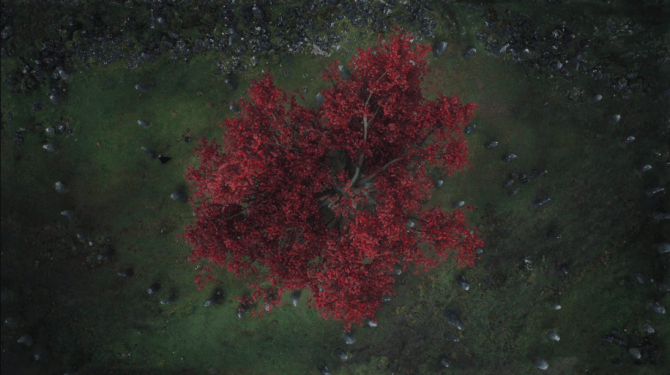
So in reality, the Night King’s symbol has nothing to do with the Targaryen family (who hail from Valyria in Essos and then Dragonstone when Valyria fell). In fact, it has nothing to do with humanity in general. The symbol comes directly from the White Walkers’ creators: the Children of the Forest. What does that symbol mean exactly? It’s unclear. But it’s worth mentioning that both spirals and circles are important symbols for very many cultures on our own Earth and presumably in Westeros as well. Game of Thrones co-showrunner David Benioff said as much in the post-episode explainer for Season 6’s “The Door.”
“These are patterns that have mystical significance for the Children of the Forest,” Benioff said. “We’re not sure exactly what they signify, but spiral patterns are important in a lot of different cultures in our world, and it makes sense that they would be in this world as well.”
Circles and spirals can represent many things, including the cyclical nature of existence. People are born, people live, and people die–all while making the same mistakes over and over again. The Targaryens have no connection to the White Walkers or the Children of the Forest that we’re aware of… but that doesn’t mean they don’t have an appreciation for the circle as a symbol.
It’s important to note that House Targaryen adopted its current sigil only some 300 years ago when Aegon I Targaryen conquered all of Westeros and established the unified political entity known as the Seven Kingdoms. The symbol features three dragons to represent Aegon and his two sisters, Rhaenys and Visenya. The three red dragons are arranged together on a field of black and together their many limbs create a circular pattern. Perhaps in crafting the image, Aegon merely went for what looks cool. It’s equally as possible, however, that Aegon valued the circle as a symbol that the Targaryen reign would never end. A circle has no end and no beginning. It simply is–like our perception of the world we occupy.
further reading: Game of Thrones Season 8: Who Are Harry Strickland and The Golden Company?
There is another thing to consider, however. There seems to be an element of the supernatural to the Targaryen family. As evidenced by Daenerys in season 1, some of them have a superhuman tolerance for fire. Not only that, but they are all preternaturally talented dragon riders. Also in the books, the Targaryens have violet-colored eyes.
Some Targaryens even appear to have precognitive abilities. Their homeland, Valyria, suffered a calamitous disaster that ended the most powerful empire the world has ever known… but the Targaryens weren’t there when it happened. They were safe in Dragonstone, their new home on the very western tip of the Valyrian Freehold. Clearly some ancient Targaryen lord had at least an inkling that disaster was coming and got out while the getting was good. Later on, King Aerys II’s son, Rhaegar Targaryen, was rumored to be plagued by prophetic visions of his own. His great uncle, Maester Aemon, claims that Rhaegar believed his son to be the “prince who was promised” in an ancient prophecy.
This is all to say that while House Targaryen is made up of human individuals, many of them seem to be gifted in understanding mystical concepts like time, magic, destiny, and prophecy. They are, in some way, in tune with the world in a way most humans are not…. not entirely unlike the Children of the Forest, perhaps?
So The Night King’s symbol almost certainly comes from the Children and the Forest and NOT House Targaryen despite how similar they look when little Ned Umber’s corpse is lit up. That’s not to say that the Night King’s symbol and House Targaryen’s sigil have nothing in common though. The circular nature of each image seems to have something to say about this story of Ice and Fire… we just don’t know what it means yet.
Alec Bojalad is TV Editor at Den of Geek and TCA member. Read more of his stuff here. Follow him at his creatively-named Twitter handle @alecbojalad





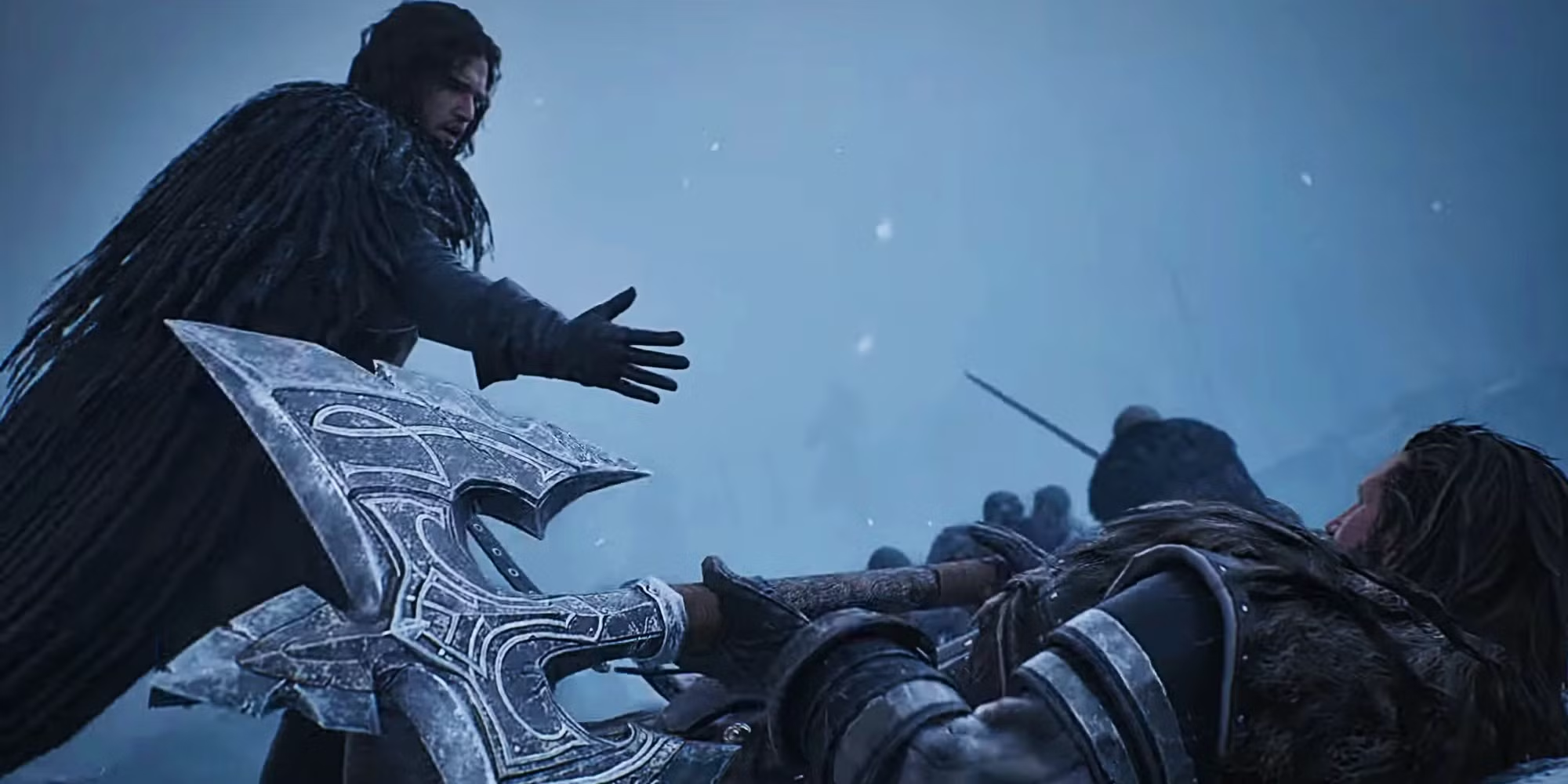














![[Book Review] The Blade Itself (The First Law Trilogy) by Joe Abercrombie](https://bendthekneegot.com/wp-content/uploads/2018/01/1516047103_maxresdefault-218x150.jpg)








